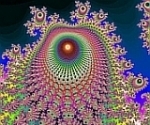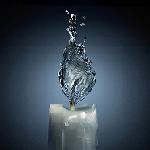Brain Structural Changes in Obstructive Sleep Apnea
- jskinner
- Posts: 1475
- Joined: Sat Aug 26, 2006 9:21 pm
- Location: Greenwich, Nova Scotia, Canada
- Contact:
Brain Structural Changes in Obstructive Sleep Apnea
"Patients with OSA showed loss of fiber integrity in brain regions
associated with behavioral and physiological functions
that are deficient in OSA. The deficits appeared in multiple regions,
and possibly reflect damage resulting from a number of
processes, including hypoxia, oxidative stress, chronic inflammation,
small vessel disease, and local ischemia. The structural
changes likely represent accumulated injury over sustained
periods of time, and presumably would not be immediately
resolved with conventional therapeutic interventions for OSA.
The findings suggest that future treatment for OSA might consider
neuroprotective interventions to prevent neural injury."
Full article in PDF available at http://www.journalsleep.org/ViewAbstract.aspx?pid=27202 (click on View full text link)
associated with behavioral and physiological functions
that are deficient in OSA. The deficits appeared in multiple regions,
and possibly reflect damage resulting from a number of
processes, including hypoxia, oxidative stress, chronic inflammation,
small vessel disease, and local ischemia. The structural
changes likely represent accumulated injury over sustained
periods of time, and presumably would not be immediately
resolved with conventional therapeutic interventions for OSA.
The findings suggest that future treatment for OSA might consider
neuroprotective interventions to prevent neural injury."
Full article in PDF available at http://www.journalsleep.org/ViewAbstract.aspx?pid=27202 (click on View full text link)
Encore Pro Analyzer Author
Facebook Apnea Group
Facebook Apnea Group
Re: Brain Structural Changes in Obstructive Sleep Apnea
Thanks, James. Quite an interesting article!!!
_________________
| Mask: Quattro™ FX Full Face CPAP Mask with Headgear |
| Additional Comments: PR SystemOne BPAP Auto w/Bi-Flex & Humidifier - EncorePro 2.2 Software - Contec CMS-50D+ Oximeter - Respironics EverFlo Q Concentrator |
Women are Angels. And when someone breaks our wings, we simply continue to fly.....on a broomstick. We are flexible like that.
My computer says I need to upgrade my brain to be compatible with its new software.
My computer says I need to upgrade my brain to be compatible with its new software.
Re: Brain Structural Changes in Obstructive Sleep Apnea
Yea Slinky yea !!!
James comes up with the most thought provoking items - this is very interesting.
DSM
James comes up with the most thought provoking items - this is very interesting.
DSM
xPAP and Quattro std mask (plus a pad-a-cheek anti-leak strap)
Re: Brain Structural Changes in Obstructive Sleep Apnea
I will carry this article with me to show to people who wonder why I do and say the things I do.
Thanks, jskinner!
Thanks, jskinner!
Re: Brain Structural Changes in Obstructive Sleep Apnea
If you've ever seen the old Tom Hanks movie "Joe versus the Volcano", I refer to this condition as "brain cloud".
_________________
| Mask: Mirage Quattro™ Full Face CPAP Mask with Headgear |
| Additional Comments: SPO PulseOx 7500. Range 10-12, A-Flex 3, Humi 1. Pad A Cheek Hose Cover (Blue w/Stars) over SleepZone Aussie Heated Hose. |
-
Gale Hawkins
- Posts: 104
- Joined: Tue Feb 10, 2009 11:45 pm
- Location: Murray, KY
Re: Brain Structural Changes in Obstructive Sleep Apnea
I know after a few weeks my "brain cloud" lifted after getting my CPAP machine and I said OMG what a mess my company is in. Four months later I hired a business major who is now president of our company.
That is just thw vocational plus side of getting the CPAP.
That is just thw vocational plus side of getting the CPAP.
- rested gal
- Posts: 12881
- Joined: Thu Sep 09, 2004 10:14 pm
- Location: Tennessee
Re: Brain Structural Changes in Obstructive Sleep Apnea
Thanks for the link, James.
It's not a happy thought, but I think there is the possibility that years and years of undiagnosed OSA (and the resulting hypoxia) may do damage to the brain that can never be fully reversed. If that is the case, then the best we can hope for is that finally getting on cpap therapy prevents further damage. Better late than never.
All the more reason to be more aware of the possibility of OSA in children and young people.
Here's interesting (and sobering) reading about what fairly short term hypoxia can do: High Altitude Study
Near the bottom of that webpage there are back/forward buttons which "turn the pages" to read the entire article.
A quote from page 439 of the High Altitude study:
Interestingly, a few studies have even reported that some of the changes in performance after exposures to extreme altitudes persist for up to a year or longer after return to lower altitudes, although much debate surrounds this issue (Bahrke and Shukitt-Hale, 1993).
--------------------------------------------------------
Equally unsettling was a 2004 editorial in Journal of Sleep:
Excerpt from the editorial:
Thirdly, chronic exposure to the features of OSA, such as repetitive intermittent hypoxia, arousals from sleep, or both, could cause neuronal dysfunction. The increased cell apoptosis, which occurs in the hippocampus and cortex of rats chronically exposed to intermittent hypoxia, supports this latter suggestion.[9] Indeed, in these animals, the neuronal dysfunction has been shown to be in the C1A hippocampal region, an area known to be associated with spatial memory and susceptible to hypoxic damage. Interestingly, in this study, the impaired ability to perform spatial memory tasks was only partially reversed after 14 days of normoxia, suggesting residual damage.
In patients with OSA, focal lesions have been detected in the left hippocampus[10] and in more diffuse areas of the brain[11]; as yet, these changes have not been linked to functional consequences. Further research will doubtless explore these tantalizing links between changesin brain morphology and the neurocognitive functional consequences.
--------------------------------------------------------
In 2005, Little Antelope posted this link on the TAS message board:
"Cause or Effect? Gray Matter Loss in OSA Patients"
Little Antelope wrote:
The article points out that “Repeated episodes of hypoxia can damage gray matter, and patients with OSA have reduced cerebral blood flow”, citing a study which suggests that “damage to gray matter occurs early in OSA patients”. Although the point is debatable as to whether the brain changes are cause or effect, still it makes sense that if a person is deprived of adequate oxygen during sleep over, say, a period of decades, some irreversible damage will likely result. Who knows? The symptoms may be chronic tiredness, confusion, what I call “Alzheimer mimicry syndrome” – disorientation, short term memory lapses, difficulty learning new things. Is it too much to expect that the best OSA treatment will do more than just slow down the decline?
I know it’s a tough subject. Some people handle it by looking only at the positive side. But our knowledge won’t progress unless we’re willing to look at the whole picture, however painful it may be.
It's not a happy thought, but I think there is the possibility that years and years of undiagnosed OSA (and the resulting hypoxia) may do damage to the brain that can never be fully reversed. If that is the case, then the best we can hope for is that finally getting on cpap therapy prevents further damage. Better late than never.
All the more reason to be more aware of the possibility of OSA in children and young people.
Here's interesting (and sobering) reading about what fairly short term hypoxia can do: High Altitude Study
Near the bottom of that webpage there are back/forward buttons which "turn the pages" to read the entire article.
A quote from page 439 of the High Altitude study:
Interestingly, a few studies have even reported that some of the changes in performance after exposures to extreme altitudes persist for up to a year or longer after return to lower altitudes, although much debate surrounds this issue (Bahrke and Shukitt-Hale, 1993).
--------------------------------------------------------
Equally unsettling was a 2004 editorial in Journal of Sleep:
Excerpt from the editorial:
Thirdly, chronic exposure to the features of OSA, such as repetitive intermittent hypoxia, arousals from sleep, or both, could cause neuronal dysfunction. The increased cell apoptosis, which occurs in the hippocampus and cortex of rats chronically exposed to intermittent hypoxia, supports this latter suggestion.[9] Indeed, in these animals, the neuronal dysfunction has been shown to be in the C1A hippocampal region, an area known to be associated with spatial memory and susceptible to hypoxic damage. Interestingly, in this study, the impaired ability to perform spatial memory tasks was only partially reversed after 14 days of normoxia, suggesting residual damage.
In patients with OSA, focal lesions have been detected in the left hippocampus[10] and in more diffuse areas of the brain[11]; as yet, these changes have not been linked to functional consequences. Further research will doubtless explore these tantalizing links between changesin brain morphology and the neurocognitive functional consequences.
--------------------------------------------------------
In 2005, Little Antelope posted this link on the TAS message board:
"Cause or Effect? Gray Matter Loss in OSA Patients"
Little Antelope wrote:
The article points out that “Repeated episodes of hypoxia can damage gray matter, and patients with OSA have reduced cerebral blood flow”, citing a study which suggests that “damage to gray matter occurs early in OSA patients”. Although the point is debatable as to whether the brain changes are cause or effect, still it makes sense that if a person is deprived of adequate oxygen during sleep over, say, a period of decades, some irreversible damage will likely result. Who knows? The symptoms may be chronic tiredness, confusion, what I call “Alzheimer mimicry syndrome” – disorientation, short term memory lapses, difficulty learning new things. Is it too much to expect that the best OSA treatment will do more than just slow down the decline?
I know it’s a tough subject. Some people handle it by looking only at the positive side. But our knowledge won’t progress unless we’re willing to look at the whole picture, however painful it may be.
ResMed S9 VPAP Auto (ASV)
Humidifier: Integrated + Climate Control hose
Mask: Aeiomed Headrest (deconstructed, with homemade straps
3M painters tape over mouth
ALL LINKS by rested gal:
viewtopic.php?t=17435
Humidifier: Integrated + Climate Control hose
Mask: Aeiomed Headrest (deconstructed, with homemade straps
3M painters tape over mouth
ALL LINKS by rested gal:
viewtopic.php?t=17435
Re: Brain Structural Changes in Obstructive Sleep Apnea
Ditto ...jnk wrote:I will carry this article with me to show to people who wonder why I do and say the things I do.
Thanks, jskinner!
I couldn't see how bad it was till the fog lifted a little...
MrSandman - Send me a dream...
Hey, I wanted a cool name related to sleep...
Hey, I wanted a cool name related to sleep...
- greenvelvetdragon
- Posts: 125
- Joined: Sun Dec 02, 2007 6:01 am
- Location: Tropical Far North Queensland Australia
Re: Brain Structural Changes in Obstructive Sleep Apnea
thanks james, yet again another brilliant find and posting. this is very timely for me as i am currently being investigated for unexplained cardiac problems, i will be taking this article to my next medical specialist appointment. you are a true gem!
cheers
GVD
cheers
GVD
_________________
| Mask: Opus 360 Nasal Pillow CPAP Mask with Headgear |
| Additional Comments: Love my Pad A Cheeks! Back up machine F&P HC234 Integrated humidifier; back up mask Tiara SNAPP ; pressure 12cm |
"Credendo Vides...by believing, one sees"
- rested gal
- Posts: 12881
- Joined: Thu Sep 09, 2004 10:14 pm
- Location: Tennessee
Re: Brain Structural Changes in Obstructive Sleep Apnea
Interesting article in RT magazine:
http://www.rtmagazine.com/issues/articl ... -01_06.asp
Excerpt:
The Relationship Between OSA and Alzheimer's
Sonya Ancoli-Israel, PhD, professor of psychiatry at the University of California, San Diego (UCSD), and the research director of the UCSD Sleep Medicine Center, has been studying sleep in Alzheimer's patients for many years.
While OSA is known to be common in adult populations, Ancoli-Israel's research estimates that half of the older adults with Alzheimer's in nursing homes may have OSA. Her research shows that if clinicians use an apnea-hypopnea index (AHI) of 5 as a cutoff, 90% of the dementia patients in the nursing home meet the criteria for having OSA. (Within the same group, their mean AHI was 32.) Furthermore, if an AHI of 15 is used as a cutoff, 63% of nursing home dementia patients still meet the criteria of having OSA. Finally, using an AHI cutoff of 20, 50% of the subjects in the study qualify for being diagnosed with OSA.1
The article goes on to describe a study:
This time, instead of studying Alzheimer's patients with OSA in a nursing home, Ancoli-Israel and colleagues went into the community looking for patients with mild to moderate Alzheimer's and OSA, but living at home with a caregiver.
The questions they hoped to answer in the study were:
* Could CPAP be tolerated in mild to moderate Alzheimer's patients with OSA?
* What effect would CPAP have on the patients' sleep apnea and daytime sleepiness?
* What effect would CPAP treatment have on the Alzheimer's patients' cognitive functioning?
Regarding the third question:
The more significant Alzheimer's findings, currently being reviewed for publication, is that true CPAP appeared to somewhat improve cognitive functioning, as measured by a composite neuropsychological score.
Ancoli-Israel says, "I can't say that we had improvement in any one [cognitive] area, but overall, we showed improvement. And again, with real CPAP, the improvement was in the first 3 weeks. With the sham CPAP, there was no improvement, but when [the patients] were switched to real CPAP, we saw improvement."
The conclusion:
Benefits, But CPAP Not a Cure for Alzheimer's
Ancoli-Israel stresses that she is not suggesting that her results lead to a cure for Alzheimer's. She believes that sleep apnea makes an Alzheimer's patient's cognitive function a little worse, and CPAP might help a patient's mental state return to the baseline of where it would be if there were no effects from sleep apnea. However, she does not believe that CPAP is curing or reversing the Alzheimer's disease itself.
http://www.rtmagazine.com/issues/articl ... -01_06.asp
Excerpt:
The Relationship Between OSA and Alzheimer's
Sonya Ancoli-Israel, PhD, professor of psychiatry at the University of California, San Diego (UCSD), and the research director of the UCSD Sleep Medicine Center, has been studying sleep in Alzheimer's patients for many years.
While OSA is known to be common in adult populations, Ancoli-Israel's research estimates that half of the older adults with Alzheimer's in nursing homes may have OSA. Her research shows that if clinicians use an apnea-hypopnea index (AHI) of 5 as a cutoff, 90% of the dementia patients in the nursing home meet the criteria for having OSA. (Within the same group, their mean AHI was 32.) Furthermore, if an AHI of 15 is used as a cutoff, 63% of nursing home dementia patients still meet the criteria of having OSA. Finally, using an AHI cutoff of 20, 50% of the subjects in the study qualify for being diagnosed with OSA.1
The article goes on to describe a study:
This time, instead of studying Alzheimer's patients with OSA in a nursing home, Ancoli-Israel and colleagues went into the community looking for patients with mild to moderate Alzheimer's and OSA, but living at home with a caregiver.
The questions they hoped to answer in the study were:
* Could CPAP be tolerated in mild to moderate Alzheimer's patients with OSA?
* What effect would CPAP have on the patients' sleep apnea and daytime sleepiness?
* What effect would CPAP treatment have on the Alzheimer's patients' cognitive functioning?
Regarding the third question:
The more significant Alzheimer's findings, currently being reviewed for publication, is that true CPAP appeared to somewhat improve cognitive functioning, as measured by a composite neuropsychological score.
Ancoli-Israel says, "I can't say that we had improvement in any one [cognitive] area, but overall, we showed improvement. And again, with real CPAP, the improvement was in the first 3 weeks. With the sham CPAP, there was no improvement, but when [the patients] were switched to real CPAP, we saw improvement."
The conclusion:
Benefits, But CPAP Not a Cure for Alzheimer's
Ancoli-Israel stresses that she is not suggesting that her results lead to a cure for Alzheimer's. She believes that sleep apnea makes an Alzheimer's patient's cognitive function a little worse, and CPAP might help a patient's mental state return to the baseline of where it would be if there were no effects from sleep apnea. However, she does not believe that CPAP is curing or reversing the Alzheimer's disease itself.
ResMed S9 VPAP Auto (ASV)
Humidifier: Integrated + Climate Control hose
Mask: Aeiomed Headrest (deconstructed, with homemade straps
3M painters tape over mouth
ALL LINKS by rested gal:
viewtopic.php?t=17435
Humidifier: Integrated + Climate Control hose
Mask: Aeiomed Headrest (deconstructed, with homemade straps
3M painters tape over mouth
ALL LINKS by rested gal:
viewtopic.php?t=17435
- rested gal
- Posts: 12881
- Joined: Thu Sep 09, 2004 10:14 pm
- Location: Tennessee
Re: Brain Structural Changes in Obstructive Sleep Apnea
http://medgenmed.medscape.com/viewarticle/576149_print
CPAP Improves Cognition in Patients With AD and OSA by Increasing Total Sleep Time
Crina Frincu-Mallos, PhD
Medscape Medical News 2008. © 2008 Medscape
June 16, 2008 (Baltimore, Maryland) — Increases in total sleep time (TST) related to treatment of obstructive sleep apnea (OSA) with continuous positive airway pressure (CPAP) are associated with improvements in cognition in patients with Alzheimer's disease, a new study shows.
"Improvements in cognition in mild to moderate Alzheimer's disease patients with OSA, when treated with CPAP, were associated with increases in TST at night but were not associated with improvements in oxygenation," the researchers, with lead author Jana R. Cooke, MD, PhD, from the University of California, San Diego School of Medicine and the Veterans Affairs San Diego Healthcare System, conclude.
Taken together with previous research indicating cognitive dysfunction in nondemented patients with OSA to be related to hypoxia and/or sleep fragmentation, they note, "the cognitive impairment associated with OSA in this patient population with dementia may not be a function of oxygenation but rather the effects of short sleep time."
Their findings were reported here at the SLEEP 2008: the 22nd Annual Meeting of the Associated Professional Sleep Societies.
CPAP Improves Cognition in Patients With AD and OSA by Increasing Total Sleep Time
Crina Frincu-Mallos, PhD
Medscape Medical News 2008. © 2008 Medscape
June 16, 2008 (Baltimore, Maryland) — Increases in total sleep time (TST) related to treatment of obstructive sleep apnea (OSA) with continuous positive airway pressure (CPAP) are associated with improvements in cognition in patients with Alzheimer's disease, a new study shows.
"Improvements in cognition in mild to moderate Alzheimer's disease patients with OSA, when treated with CPAP, were associated with increases in TST at night but were not associated with improvements in oxygenation," the researchers, with lead author Jana R. Cooke, MD, PhD, from the University of California, San Diego School of Medicine and the Veterans Affairs San Diego Healthcare System, conclude.
Taken together with previous research indicating cognitive dysfunction in nondemented patients with OSA to be related to hypoxia and/or sleep fragmentation, they note, "the cognitive impairment associated with OSA in this patient population with dementia may not be a function of oxygenation but rather the effects of short sleep time."
Their findings were reported here at the SLEEP 2008: the 22nd Annual Meeting of the Associated Professional Sleep Societies.
ResMed S9 VPAP Auto (ASV)
Humidifier: Integrated + Climate Control hose
Mask: Aeiomed Headrest (deconstructed, with homemade straps
3M painters tape over mouth
ALL LINKS by rested gal:
viewtopic.php?t=17435
Humidifier: Integrated + Climate Control hose
Mask: Aeiomed Headrest (deconstructed, with homemade straps
3M painters tape over mouth
ALL LINKS by rested gal:
viewtopic.php?t=17435














